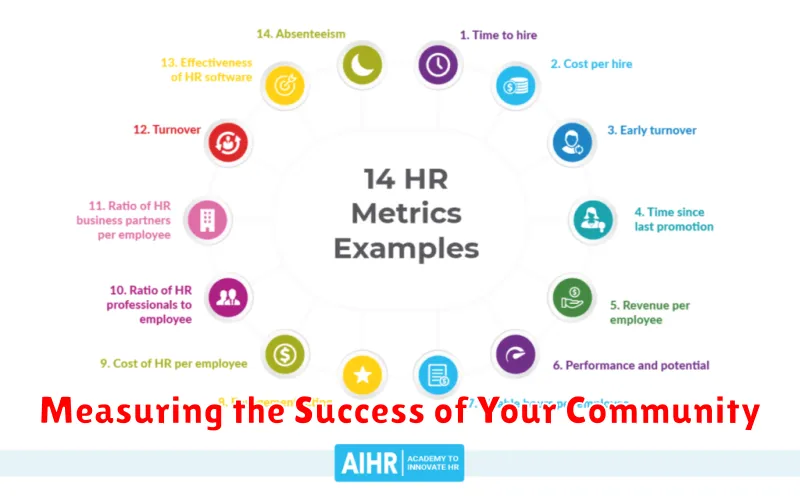In today’s digitally-driven world, community management plays a vital role in building a thriving online community around your brand. Effective community management fosters brand loyalty, drives engagement, and provides valuable insights into your target audience. This article explores the power of community management and provides actionable strategies for creating and nurturing a successful online community that strengthens your brand presence and ultimately contributes to business growth. Learn how to harness the power of community to transform casual customers into passionate brand advocates.
Discover the essential elements of a robust community management strategy, including defining your community goals, identifying your target audience, choosing the right online platform, and crafting engaging content. Understanding the importance of community management is crucial for any business seeking to cultivate meaningful connections with its customers and build a strong online brand community. This article will provide a comprehensive overview of the key principles and best practices for effective community management, enabling you to unlock the full potential of your online community and drive significant brand growth.
Defining Your Community and Its Purpose
Before launching an online community, it’s crucial to clearly define what your community is and its intended purpose. A well-defined purpose provides direction and helps attract the right members. Ask yourself: What specific needs or interests will this community address? What value will it provide to members?
Consider whether your community will focus on support, networking, discussion, or a combination of these. Will it be a place for customers to seek help with your products, a platform for professionals in a specific field to connect, or a forum for enthusiasts to discuss a shared passion? Defining this focus is essential for attracting and retaining engaged members.
Clearly articulating the purpose also helps establish community guidelines and moderation policies. A community focused on professional networking will likely have different rules than one geared towards casual discussion. A well-defined purpose informs how the community is managed and moderated, ensuring it remains a positive and productive environment for all members.
Identifying and Engaging Your Target Audience
A thriving online community starts with understanding your target audience. Identifying your ideal members is crucial. Who are they? What are their interests, needs, and pain points? Where do they spend their time online? Answering these questions will guide your community-building strategy.
Once identified, focus on engaging your target audience. Craft a compelling message that resonates with their values. Utilize platforms and channels they frequent. Offer exclusive content and experiences tailored to their preferences. Active engagement fosters a sense of belonging and encourages participation.
Consider creating detailed audience personas to better understand your target members. These personas represent fictional, yet realistic, depictions of your ideal community members. They should include demographic information, online behavior, motivations, and goals. Personas can help you personalize your engagement efforts and ensure your content remains relevant.
Creating Valuable Content and Experiences
Content fuels community engagement. Valuable content resonates with your audience, addresses their needs, and encourages interaction. Consider what type of content will best serve your community. This might include educational resources, behind-the-scenes glimpses, exclusive content, user-generated content, or interactive experiences like Q&As and polls.
Think beyond simple posts and explore diverse formats. Short videos, infographics, and downloadable resources can significantly enhance the value you provide. Remember, the goal is to create a content ecosystem that keeps your community coming back for more.
Consistency is key. Establish a regular posting schedule to maintain momentum and keep your audience engaged. A content calendar can help you plan and organize your efforts. Finally, don’t be afraid to experiment and adapt. Analyze what resonates most with your community and adjust your content strategy accordingly.
Building Relationships and Fostering Connections

A thriving online community is built upon strong relationships and genuine connections between members. Facilitating these connections is a key responsibility of community management.
Encourage interaction by creating opportunities for members to engage with each other. This could include hosting online events like Q&A sessions or virtual meetups. Open-ended questions and polls within the community platform can also spark conversations.
Recognize and acknowledge active members. Highlighting valuable contributions and showcasing member achievements creates a sense of belonging and encourages continued participation. Consider implementing a member spotlight or recognition program.
Promote a welcoming and inclusive environment. Establish clear community guidelines and moderate discussions to ensure respectful interactions. Quickly address any instances of negativity or inappropriate behavior to maintain a positive atmosphere.
Managing and Moderating Your Community
Effective community management requires consistent moderation to maintain a positive and productive environment. Clear guidelines are essential. Establish clear rules of conduct regarding acceptable behavior, language, and content. Communicate these rules clearly to all members, ensuring easy access and understanding.
Active moderation is key. Regularly monitor community activity for any violations of the established guidelines. This includes addressing spam, inappropriate content, and disruptive behavior promptly. Consistent enforcement builds trust and encourages positive interactions among members.
Transparency in moderation practices is crucial. Clearly communicate the reasons behind moderation decisions to members. This fosters understanding and helps maintain a sense of fairness within the community. Provide a clear process for appealing moderation decisions if members feel they have been unfairly treated.
Responding to Feedback and Concerns
Active listening and timely responses are crucial for managing feedback and concerns within your online community. Acknowledge all feedback, whether positive or negative, to demonstrate that you value community input.
Address concerns transparently and honestly. If a problem requires investigation, inform the community member and provide updates as they become available. Empathy is key; even if you cannot solve every issue immediately, acknowledging the member’s frustration and demonstrating a willingness to help goes a long way.
Develop clear guidelines for handling different types of feedback. This could involve creating FAQs, dedicated feedback channels, or designated team members to address specific issues. Consistency in your responses helps build trust and reinforces your commitment to community well-being.
Measuring the Success of Your Community

Measuring the success of your online community is crucial for understanding its impact and making informed decisions for future growth. Key Performance Indicators (KPIs) provide quantifiable data to track progress and demonstrate the value of your community building efforts.
Engagement metrics are essential. Track active users, frequency of posts and comments, and the overall reach of your content. These metrics reveal how actively your community participates and how effectively your content resonates with them.
Beyond engagement, consider community health metrics. Monitor member retention rates to understand how well you’re retaining members over time. Track the resolution rate of issues and the sentiment of conversations to gauge member satisfaction and identify potential areas for improvement.
Finally, align community goals with business objectives. If a goal is to drive sales, track conversions originating from the community. If a goal is brand awareness, monitor mentions and shares across other social platforms. By connecting community activities to broader business outcomes, you can demonstrate the tangible value of your community.
Growing and Scaling Your Community
Once your community has a solid foundation, it’s time to focus on growth and scale. Strategic planning is crucial for this stage. Define clear growth objectives. Are you aiming for increased membership, higher engagement rates, or expanded brand reach? Establish key performance indicators (KPIs) to track progress and measure success.
Community promotion is essential for attracting new members. Leverage existing social media channels, email marketing, and partnerships to spread the word about your community. Consider running targeted advertising campaigns to reach specific demographics.
Community scaling involves streamlining processes and implementing tools to manage a larger member base efficiently. This might include automation for onboarding new members, content moderation tools, and community management platforms.
As your community grows, maintaining its core values and culture is paramount. Ensure that new members understand and adhere to community guidelines. Empower active members to take on leadership roles, such as moderators or community ambassadors, to help foster a positive and inclusive environment.

